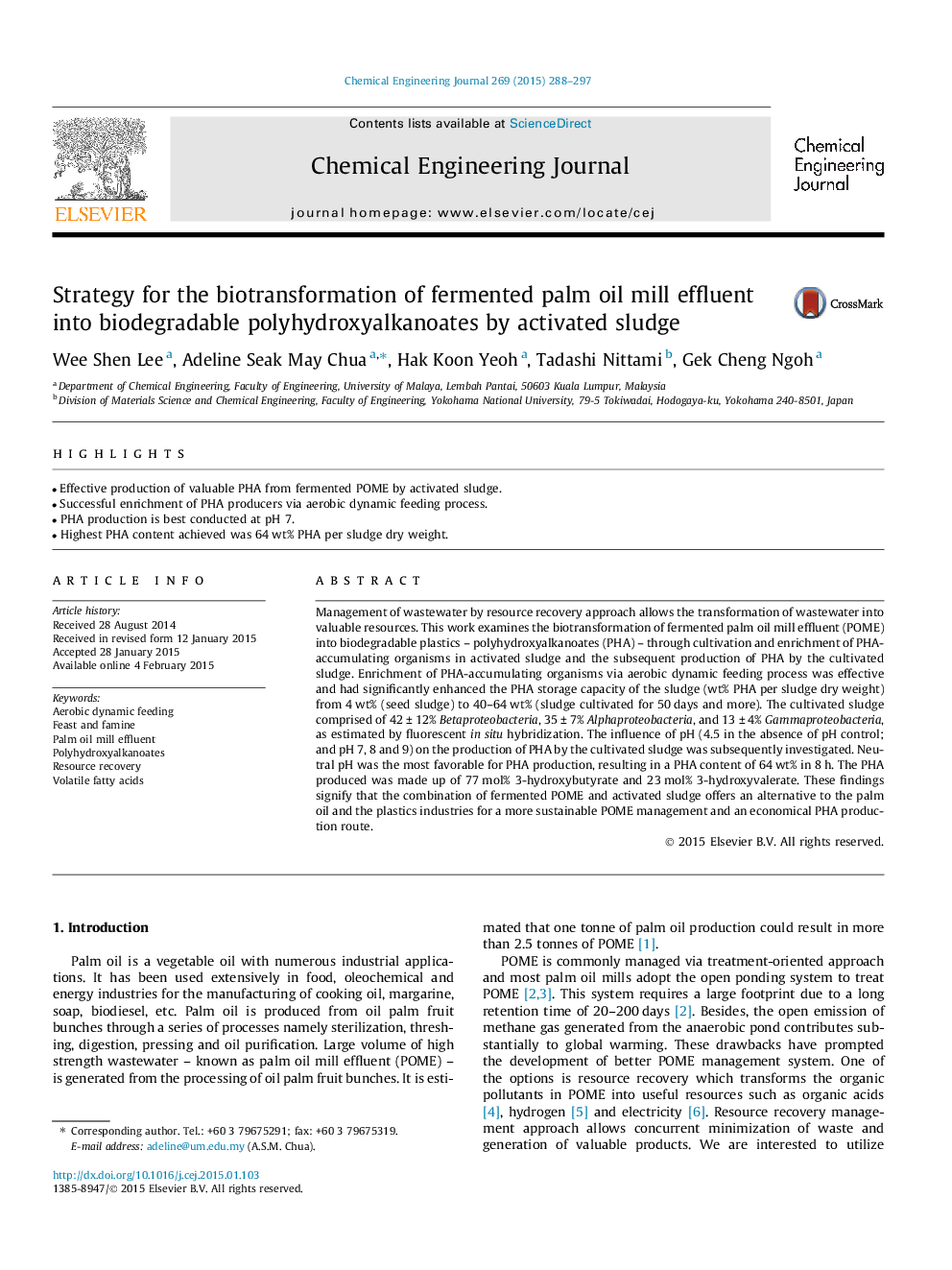| Article ID | Journal | Published Year | Pages | File Type |
|---|---|---|---|---|
| 146526 | Chemical Engineering Journal | 2015 | 10 Pages |
•Effective production of valuable PHA from fermented POME by activated sludge.•Successful enrichment of PHA producers via aerobic dynamic feeding process.•PHA production is best conducted at pH 7.•Highest PHA content achieved was 64 wt% PHA per sludge dry weight.
Management of wastewater by resource recovery approach allows the transformation of wastewater into valuable resources. This work examines the biotransformation of fermented palm oil mill effluent (POME) into biodegradable plastics – polyhydroxyalkanoates (PHA) – through cultivation and enrichment of PHA-accumulating organisms in activated sludge and the subsequent production of PHA by the cultivated sludge. Enrichment of PHA-accumulating organisms via aerobic dynamic feeding process was effective and had significantly enhanced the PHA storage capacity of the sludge (wt% PHA per sludge dry weight) from 4 wt% (seed sludge) to 40–64 wt% (sludge cultivated for 50 days and more). The cultivated sludge comprised of 42 ± 12% Betaproteobacteria, 35 ± 7% Alphaproteobacteria, and 13 ± 4% Gammaproteobacteria, as estimated by fluorescent in situ hybridization. The influence of pH (4.5 in the absence of pH control; and pH 7, 8 and 9) on the production of PHA by the cultivated sludge was subsequently investigated. Neutral pH was the most favorable for PHA production, resulting in a PHA content of 64 wt% in 8 h. The PHA produced was made up of 77 mol% 3-hydroxybutyrate and 23 mol% 3-hydroxyvalerate. These findings signify that the combination of fermented POME and activated sludge offers an alternative to the palm oil and the plastics industries for a more sustainable POME management and an economical PHA production route.
